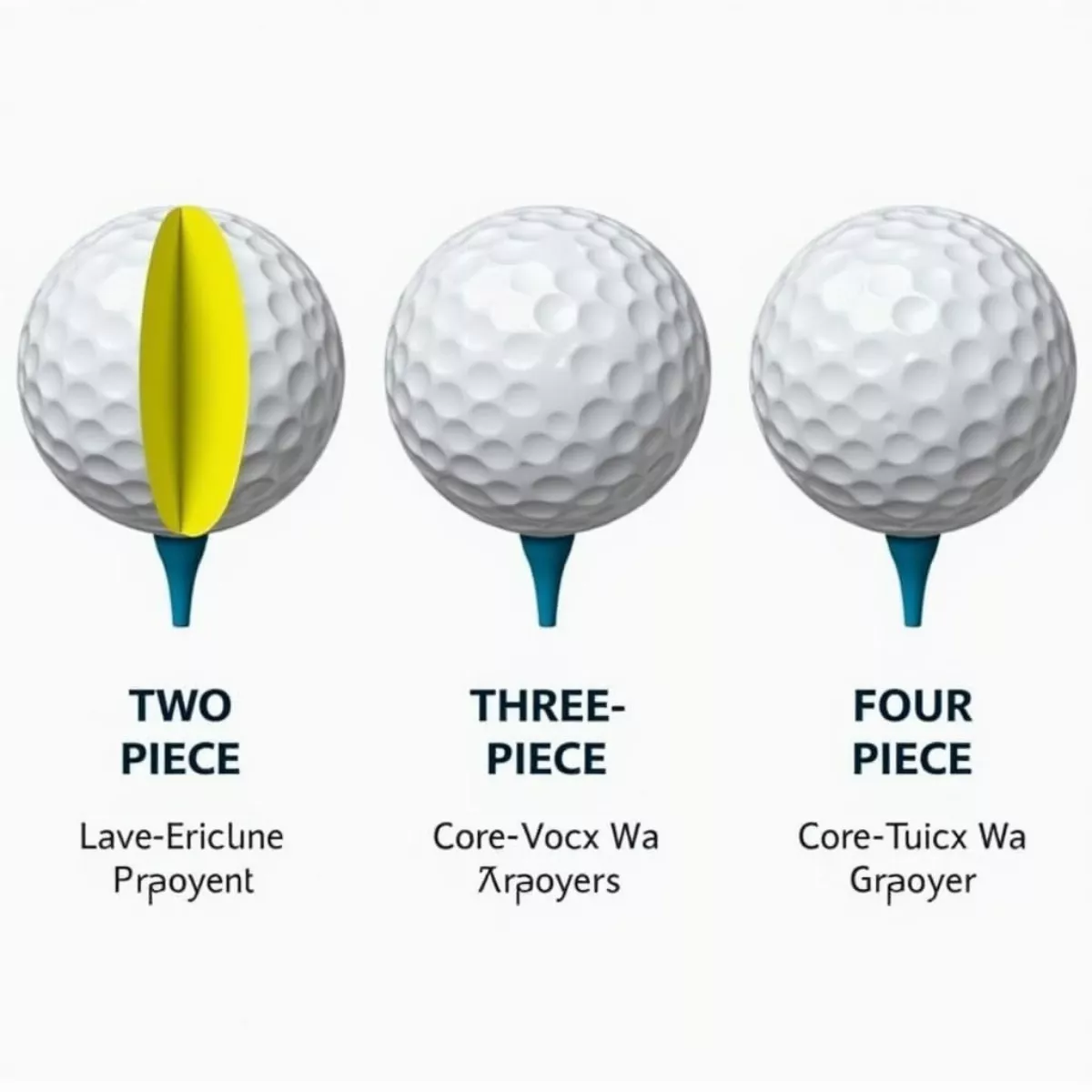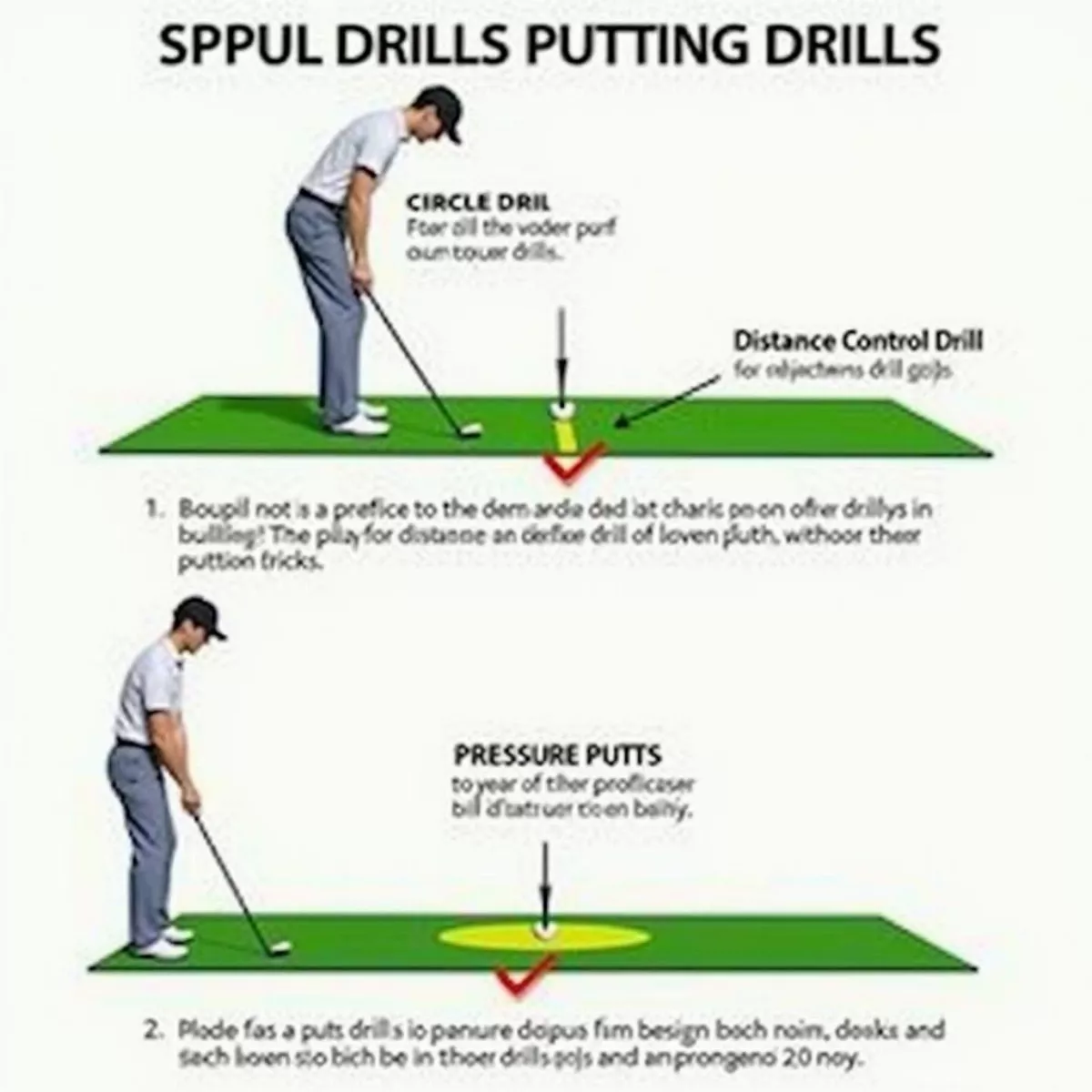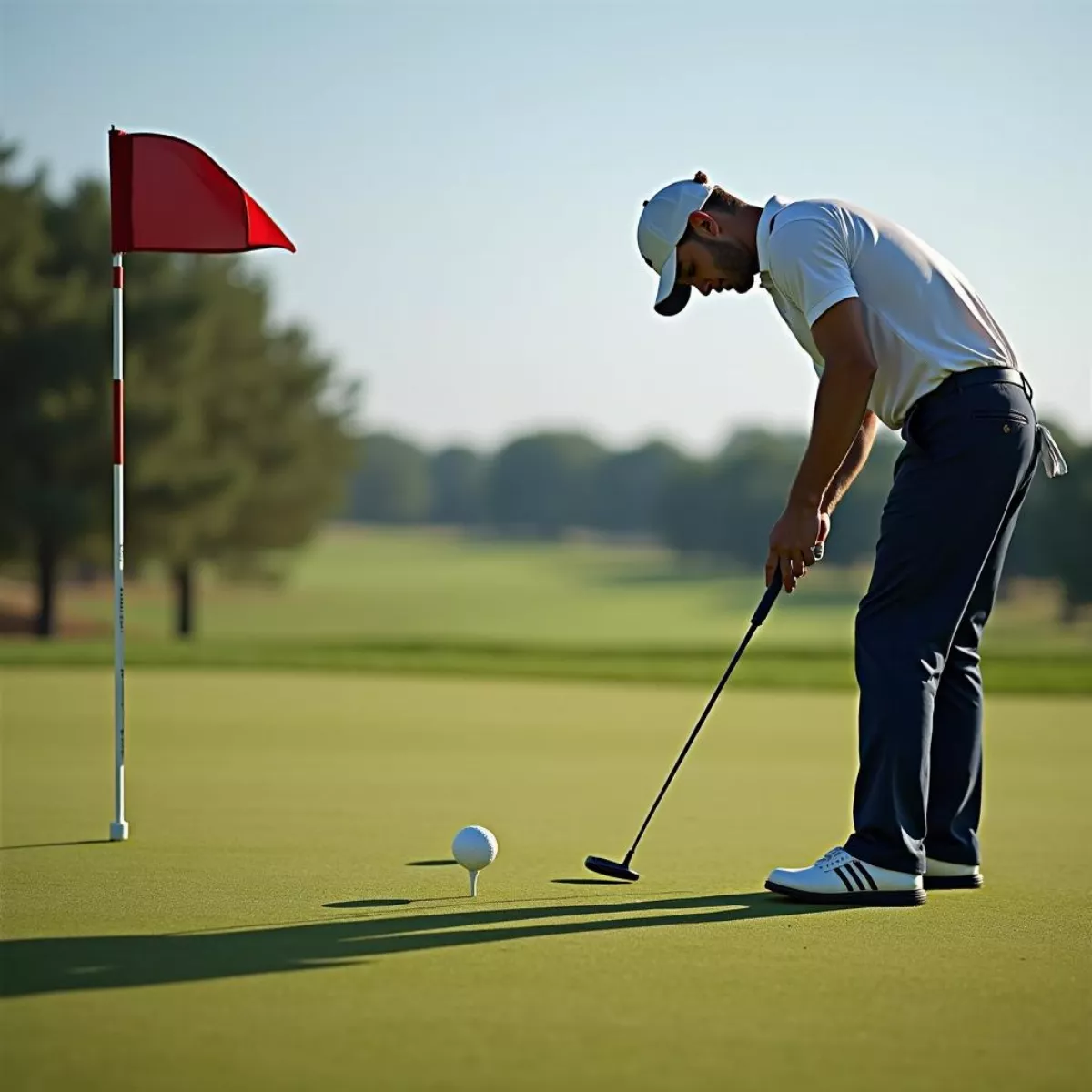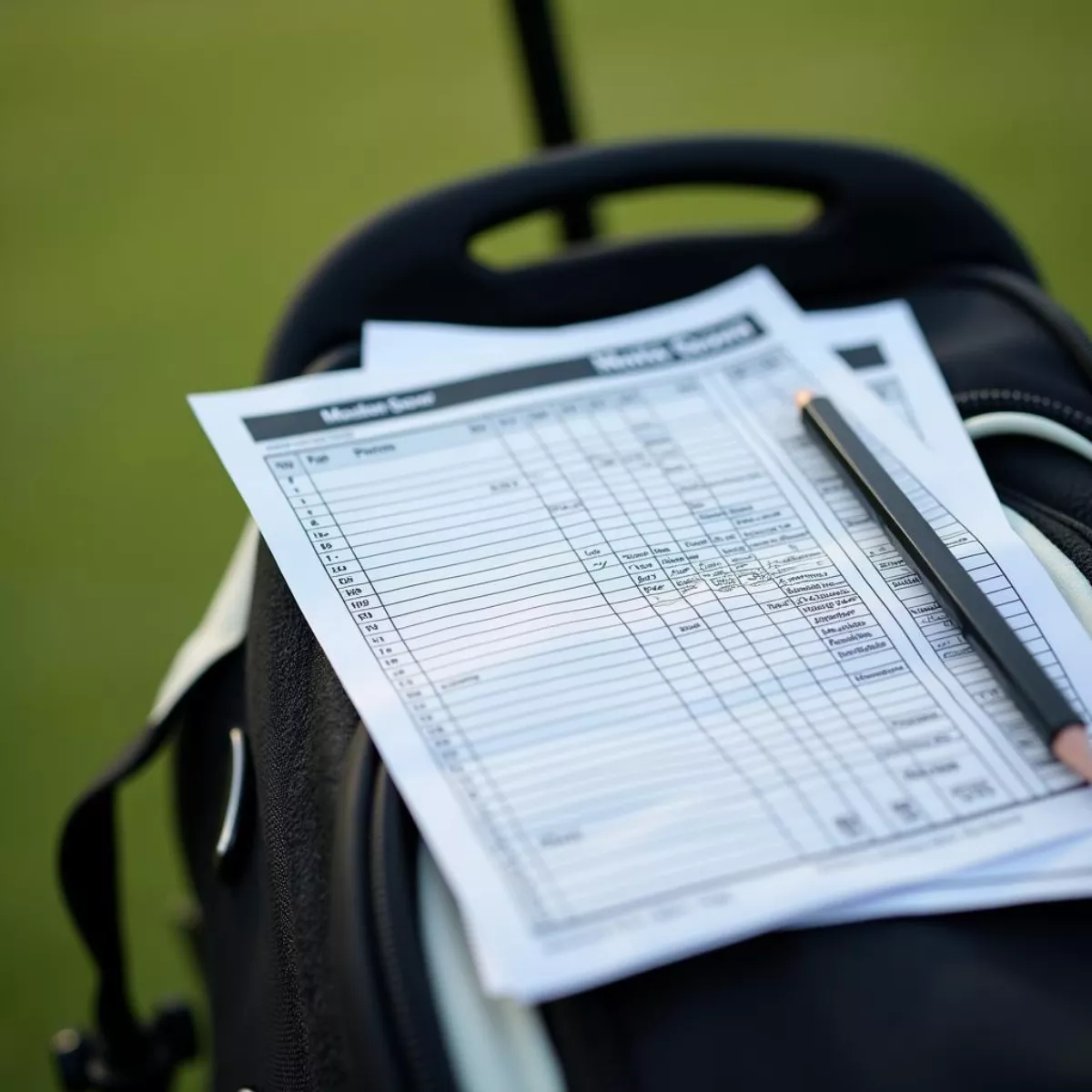When it comes to improving your golf game, one of the most crucial pieces of equipment isn’t your club or shoes—it’s your golf ball! Selecting the right golf ball can dramatically affect your performance on the course. Let’s dive into the world of golf balls and break down the factors you should consider when choosing the best one for you.
Understanding Golf Ball Types
There are several types of golf balls, each designed for different playing styles and conditions. The most common types are:
- Two-Piece Balls: Ideal for beginners. These balls feature a solid rubber core and a durable outer cover, offering a straight flight with significant distance.
- Three-Piece Balls: Suitable for intermediate players, these balls offer more spin and control. They have a rubber core, a layer for added spin, and a softer outer cover.
- Four-Piece Balls: Aimed at advanced players, four-piece balls provide maximum spin and distance control. They feature multiple layers that work together to achieve various performance metrics.
The choice of your golf ball should reflect your skill level and what you want from your game.
 Golf Balls by Type
Golf Balls by Type
Key Features to Consider
When selecting a golf ball, consider these key features:
1. Compression
- Low Compression: Balls with lower compression are softer and more suited for slower swing speeds. Great for beginners or players with less power.
- High Compression: Designed for faster swing speeds, these balls deliver better distance and control.
2. Spin
- Low Spin: Helps maintain distance and reduces hooks and slices. Good for beginners.
- High Spin: Offers greater control around the greens. An excellent choice for skilled players who can handle it.
3. Cover Material
- Surlyn: Durable and resistant to scuffing, Surlyn covers are found on two-piece balls and are perfect for beginners.
- Urethane: Softer and providing better feel and spin, urethane is commonly found in multi-layer balls, making them suitable for advanced players.
4. Performance
- Distance: If your primary goal is distance, consider two-piece balls designed for maximum carry and roll.
- Control: If you’re looking for better control and feedback, opt for a three-piece or four-piece ball.
 Golf Ball Compression & Spin Explained
Golf Ball Compression & Spin Explained
Golf Ball Selection Chart
| Feature | Ball Type | Best For |
|---|---|---|
| Compression | Low | Beginners, slower swing speeds |
| High | Advanced, faster swing speeds | |
| Spin | Low | Beginners |
| High | Skilled players | |
| Cover Material | Surlyn | Beginners, durability |
| Urethane | Advanced, feel & control | |
| Performance | Distance | Swing speed & power |
| Control | Precision, short game |
Tips for Choosing the Right Ball
Here are some quick tips you might find useful during your selection process:
- Consider your skill level: Beginners should look for distance and durability.
- Think about your swing speed: A faster swing may require a different ball than a slower one.
- Test different types: Don’t hesitate to try a few options to see which provides the best feel and performance for you.
- Keep track of the conditions you play in: Different weather and course conditions might affect your choice.
How Do I Know Which Ball is Right for Me?
 Choosing the Perfect Golf Ball
Choosing the Perfect Golf Ball
Choosing a golf ball can feel daunting, but it’s all about understanding your own game. Here are the three questions you should ask yourself:
- What is my swing speed?
- What skills do I want to improve (distance vs. control)?
- What type of feel do I prefer from the golf ball?
Additional Considerations
While the type of ball you pick is essential, don’t forget to take notes of your recent games. Are your drives consistently short? Are you having trouble controlling your spin? Such insights can guide your choice when purchasing.
Popular Golf Ball Recommendations
Here are a few popular golf balls that you might consider based on different skill levels:
- Beginners:
- Titleist DT TruSoft
- Srixon Soft Feel
- Intermediate:
- Taylormade Tour Response
- Callaway Supersoft
- Advanced:
- Titleist Pro V1
- TaylorMade TP5
These balls are famous for their performance and cater to a range of player abilities.
Key Takeaways
- Golf balls vary by type, compression, spin, and cover material—pick the one that matches your skill level and needs.
- Understand your swing speed and what you want to achieve (distance, control, etc.).
- Test different balls to find which provides the best feel and enhances your performance.
- Review your play style and conditions to ensure your selected ball complements your game.
Frequently Asked Questions (FAQs)
Q1: What is the best golf ball for beginners?
A1: A low-compression ball, like the Titleist DT TruSoft, is excellent for beginners as it offers more distance and is durable.
Q2: Do professional golfers use different balls?
A2: Yes, professional golfers typically use advanced multi-layer balls that provide better control and spin for higher-level play.
Q3: Can I use the same ball for every round?
A3: It’s advisable to choose a ball based on the conditions of play. However, consistent use of the same type can improve familiarity and comfort.
Q4: What does ball compression mean?
A4: Compression refers to how much a golf ball deforms after being hit. Lower compression balls are softer and suited for slower swings, whereas higher compression balls are firmer and suitable for faster swings.
 Comparing Golf Ball Durability
Comparing Golf Ball Durability
Q5: How often should I replace my golf balls?
A5: Replace your golf ball if it becomes scuffed or damaged, or if you’re consistently noticing a decrease in performance. Regularly assess their condition after rounds.
Q6: Are expensive golf balls better?
A6: Not necessarily. While premium balls often offer advanced features and performance, the best ball for you depends on your skill level and preferences.
Q7: Should I use the same ball for practice and play?
A7: Yes, using the same type of ball for both practice and play can help you develop consistency in your game.
Q8: What is the difference between a soft ball and a hard ball?
A8: Soft balls generally provide more feel and spin, while hard balls focus on distance and durability, typically suited for faster swing speeds.
Choosing the right golf ball doesn’t have to be overwhelming. With the right insights and a little experimentation, you’ll be able to find a ball that fits your game perfectly. Happy golfing!

 Woman in Athletic Wear
Woman in Athletic Wear Fabric Types
Fabric Types
 DIY Golf Club Crafts
DIY Golf Club Crafts Community Golf Equipment Exchange
Community Golf Equipment Exchange
 Golf Course Design: Hole Size Variations
Golf Course Design: Hole Size Variations Golf Putting Drills for Accuracy
Golf Putting Drills for Accuracy
 Golfer Putting on Green
Golfer Putting on Green Golf Course Obstacles
Golf Course Obstacles
 Professional Golf Players Outfit
Professional Golf Players Outfit Golf Tournament Seasonal Outfits
Golf Tournament Seasonal Outfits
 Golfer practicing swing on driving range
Golfer practicing swing on driving range Golfer receiving instruction from a coach
Golfer receiving instruction from a coach
 Golfer Celebrating Hole In One
Golfer Celebrating Hole In One Golf Ball And Club On Green
Golf Ball And Club On Green
 Professional Golfer Executing Powerful Drive
Professional Golfer Executing Powerful Drive Amateur Golfer Celebrates Impressive Drive
Amateur Golfer Celebrates Impressive Drive
 Golf Scorecard and Pencil
Golf Scorecard and Pencil Golfer Celebrating Success
Golfer Celebrating Success